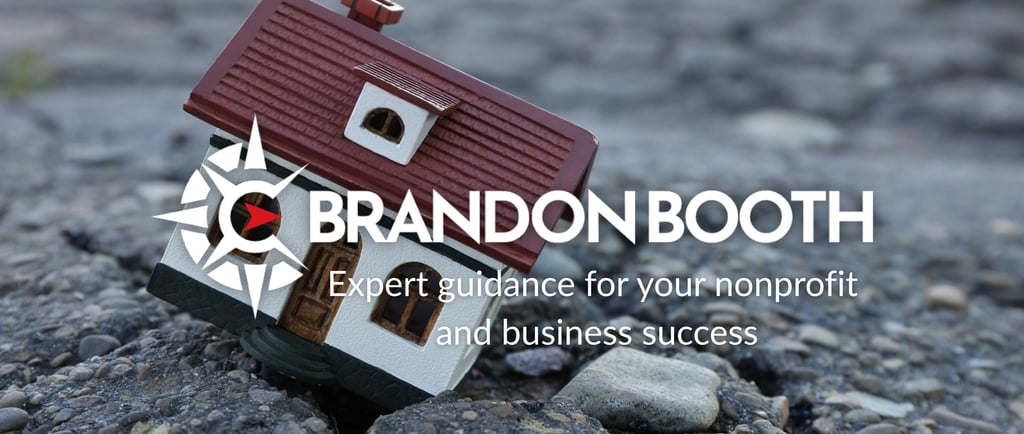Are Hidden Assumptions Destabilizing Your Nonprofit?
Brandon Booth
4/17/20253 min read
Never miss a post! Signup for my email updates today and get expert guidance delivered directly to your inbox!


Too often, we pour our heart and soul into our mission, only to see things start to crumble. Volunteers get burnt out. (We get burnt out!) Donors seem hesitant. The impact we envisioned feels frustratingly out of reach.
It’s the nonprofit equivalent of watching a beautiful building develop alarming cracks in the foundation. Even a brilliant blueprint is doomed if the ground beneath the building is unstable or the building materials are flawed.
In the world of nonprofits, these hidden hazards are your unexamined assumptions. They are the shaky soil and faulty bricks that can undermine your entire structure, no matter how noble the design.
In previous articles, we explored finding your "True North" through discernment (the why and where of your build) and mapping your journey with a Theory of Change (the how). Today, we address a critical hidden risk: Is the ground you're building on truly solid?
What Lies Beneath? Identifying Your Assumptions
In the Theory of Change model, assumptions are the often-unspoken, deeply held beliefs that shape everything you do. They dictate how you think change happens. They are the filter of values and beliefs through which you interpret every situation and piece of evidence.
Where your assumptions hide:
In your problem statement ("We assume the core problem is...")
In your strategic initiatives (“We assume that if we build it they will come…”)
In your proposed activities ("We assume doing X will lead to Y which will lead to Z...")
In your list of resources (“We assume that our volunteers have the time and energy to…”)
Pause and Reflect: Jot down one or two core beliefs or assumptions that underpin your main program or initiative. What must be true about the world, your audience, or your methods for your plan to succeed?
How to Stress-Test Your Assumptions
Building on faulty assumptions is like building on sand. It leads to wasted resources, programs that miss the mark, and a slow drift away from your true mission. Testing brings clarity and prevents costly mistakes.
Here are two powerful — and simple — methods to inspect your foundational beliefs:
The "Why?" Chain:
Like a persistent child, keep asking "why?" about your activities and expected outcomes. Follow the chain down until you hit the bedrock assumption.
Example: "We run a mentoring program." -> Why? "Because mentoring helps at-risk youth." -> Why? "Because it provides positive role models." -> Why does that help? "Because we assume positive role models inspire better choices." -> Why? "Because we assume the main barrier is lack of inspiration, not lack of opportunity..." Aha! There's a core assumption to examine.
Seek Counter-Evidence:
My college philosophy professor taught me a maxim worth living by. He said, “Your best friend is the one who proves you wrong.” The point is simple, if you prove me wrong you’ve done me a favor — you’ve saved me from going any further down a wrong path.
So, search for data, stories, research, or experiences that challenge your assumptions. It’s not pleasant to be wrong, but it’s better for your mission. Challenging your assumptions is wise, necessary work.
Ready to inspect your foundation?
Take one step this week: identify one core assumption behind your work and try testing it using the "Why?" Chain or by seeking counter-evidence.
If you'd like a partner in this vital architectural review, I'm here to help. Schedule a free consultation call with me today, and let's ensure you're building on solid ground.


Building on faulty assumptions is like building on sand.
Inspect Your Assumptions!
Let's make sure you're building on solid ground!
© Brandon Booth, 2025
Expert guidance for nonprofits and ministries.
Brandon Booth



